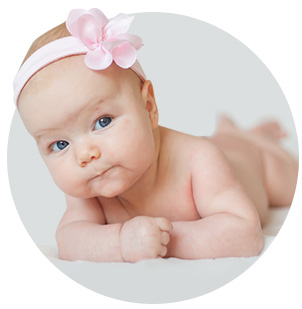Baby Bouncer Buying Guide
3
When to Start and Stop Using a Baby Bouncer
Baby bouncers indeed make your life a lot easier by holding and entertaining the apple of
your eye while you complete your daily chores. However, over-use of any gadget can
spell harm to the baby, and you certainly do not want that to happen. There are various
factors you need to consider to determine whether it is ok to use a bouncer for your baby or
not.
Every baby bouncer comes with a manufacturer's guidelines specifying the exact weight capacity of the bouncer. Most manufacturers specify an upper weight limit of 9 to 11 kg. (A heavier child may tip off the seat.) Some seats do accommodate toddlers and bigger kids, with weight limits ranging from 5 to 8 kg. One must refer to these specifications at the time of purchase.
The ideal age of using a baby bouncer, specified on the bouncer seat guide, ranges from 0 � 7 months. However, the use of the baby bouncer is subject to change depending on factors other than age, i.e. baby's weight and development.
Weight
Every baby bouncer comes with a manufacturer's guidelines specifying the exact weight capacity of the bouncer. Most manufacturers specify an upper weight limit of 9 to 11 kg. (A heavier child may tip off the seat.) Some seats do accommodate toddlers and bigger kids, with weight limits ranging from 5 to 8 kg. One must refer to these specifications at the time of purchase.
Age
The ideal age of using a baby bouncer, specified on the bouncer seat guide, ranges from 0 � 7 months. However, the use of the baby bouncer is subject to change depending on factors other than age, i.e. baby's weight and development.

Growth and Development
Every baby reaches developmental milestones at different ages - some might learn to sit up unassisted by the age of 5 months while others might accomplish the same at 7 months of age. Look out for signs of development in your baby. If you baby is attempting to climb out of the seat, or has learned to sit up unassisted, it is time to stop using the bouncer seat, irrespective of your child's chronological age.
With Preemies
Premature babies require greater neck, back and tummy support than normal babies. Also, being smaller in size than normal newborns, preemies will not be the right fit for a bouncer. Therefore, it is best to avoid using bouncers for premature babies. If you feel that your baby is healthy enough to enjoy a bouncer, please consult your paediatrician before starting to use the bouncer for your baby.
Don't make it a Habit
It becomes very tempting for mothers to keep their babies in the bouncer for longer periods of time as they get to use both hands and get a lot of work done then. However, letting your baby spend too much time in the bouncer might not be a great idea. Babies remain in a reclined position in a bouncer at all times, and this prevents them from indulging in other playful activities necessary for their growth and development.
Reclining Seat
You should place your newborn in the bouncer only when it is in a full reclining position. This is the safest position for your baby. A semi-reclined position might press on the chest and block your baby's airflow.
